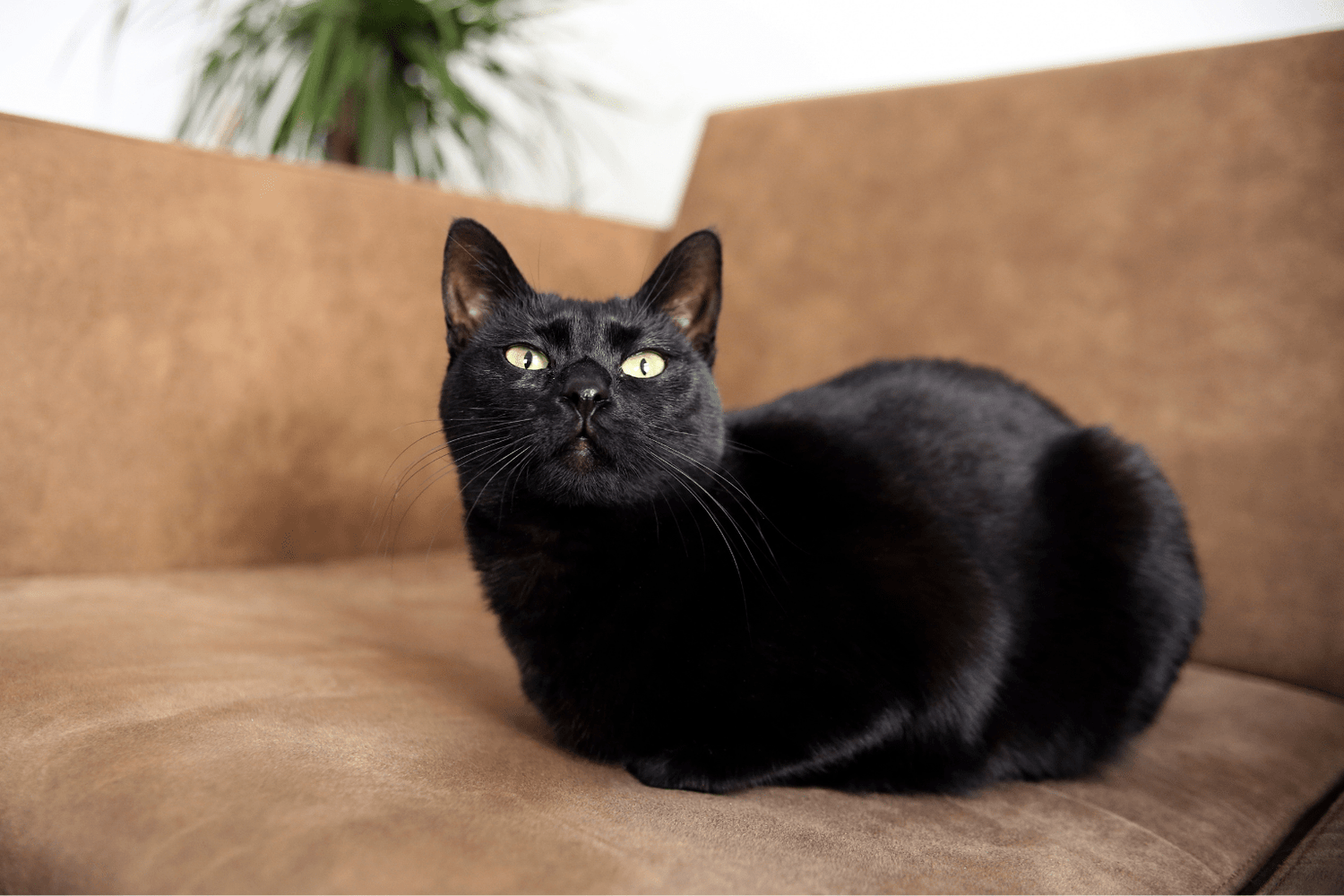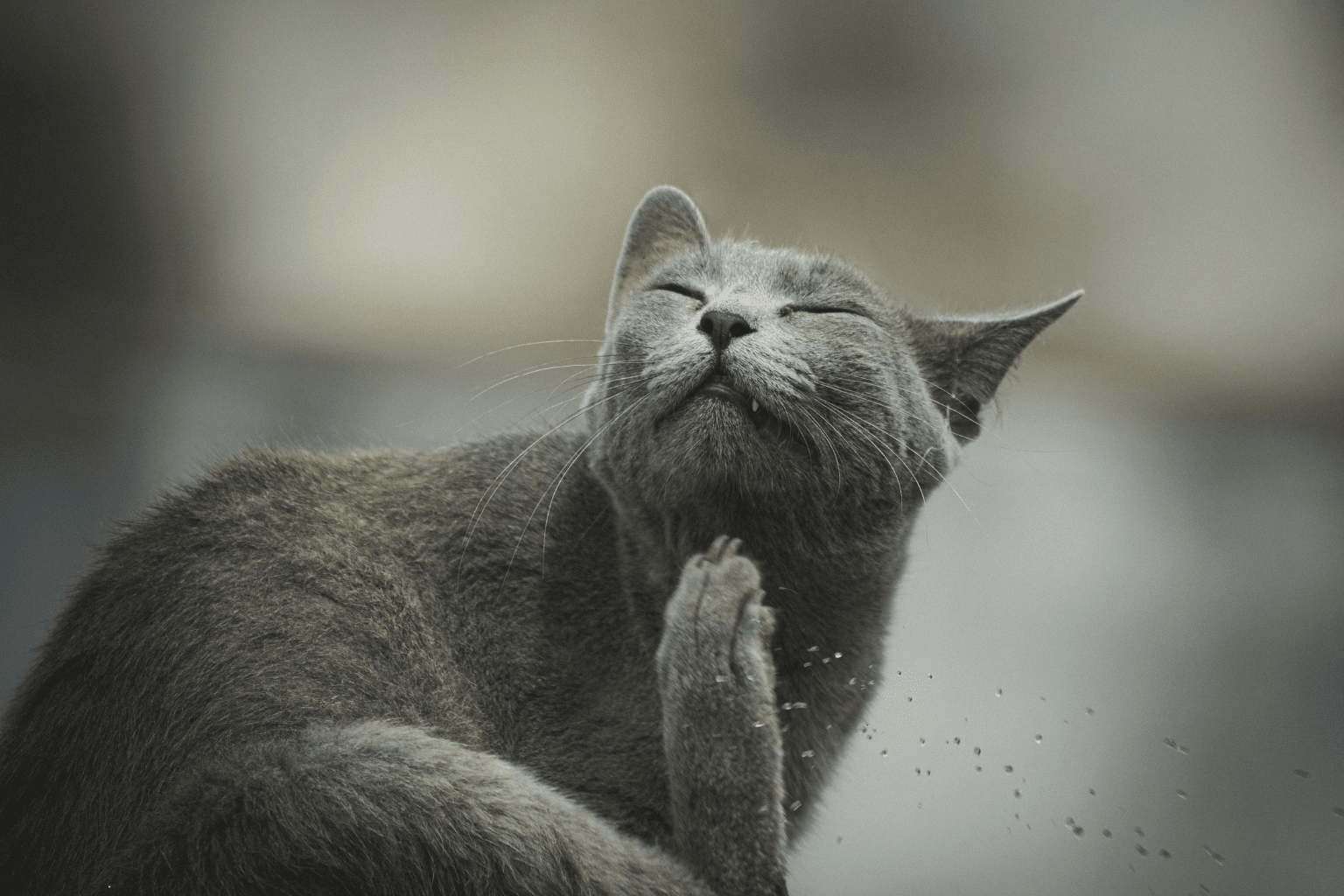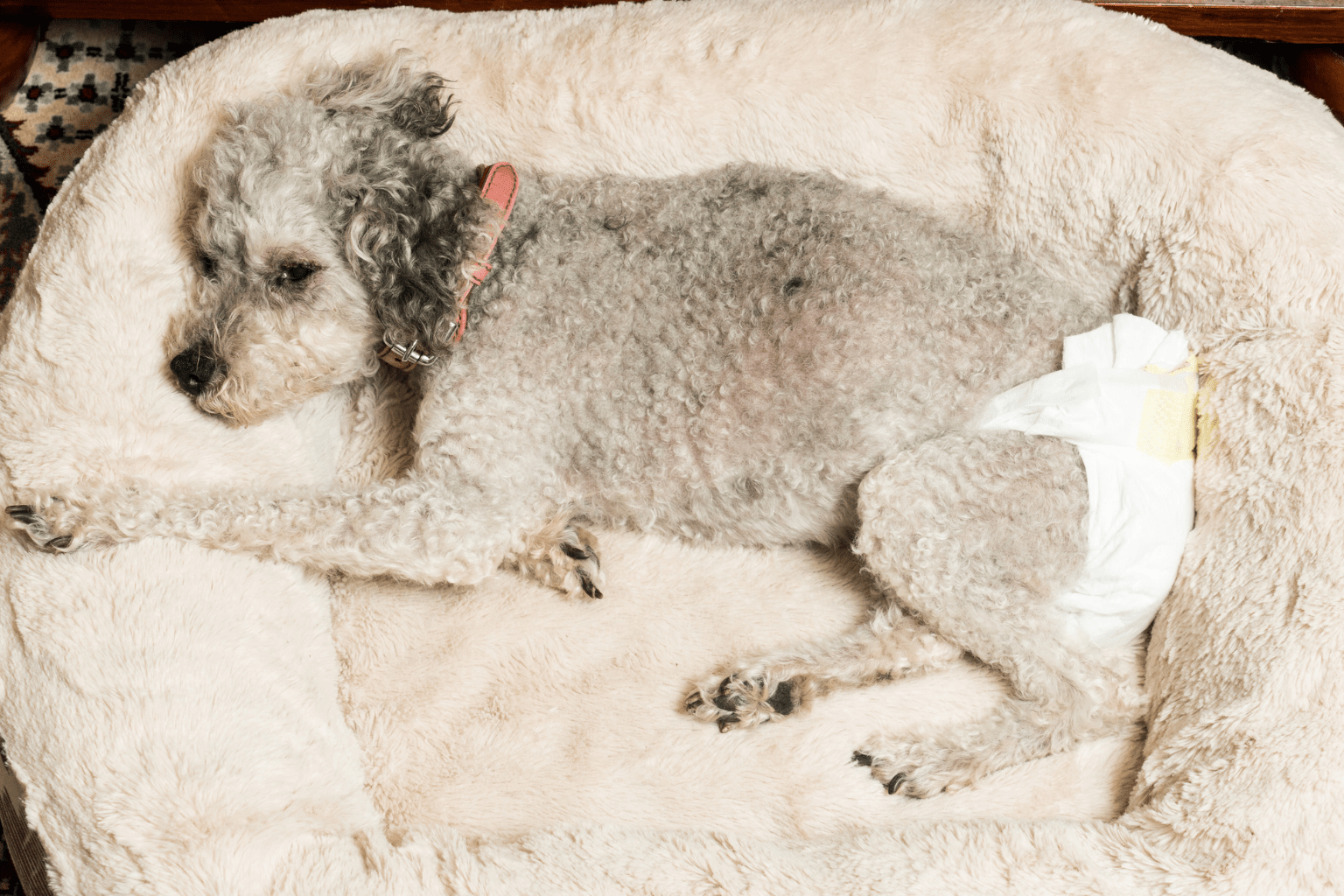Key Takeaways
- A cat refusing wet food is usually trying to communicate a specific need or discomfort.
- There are logical reasons behind a cat's refusal to eat wet food, not just stubbornness.
- Gentle, patient approaches are more effective than forcing a cat to eat wet food.
- Understanding your cat's behavior can help reduce mealtime stress for both pet and owner.
- Experience and empathy are key to resolving feeding challenges with cats.
Table of Contents
- Why Some Cats Refuse Wet Food (It's Not Personal)
- The Natural Wellness Edge – Why Wet Food Matters
- Getting Started – Preparing for a Stress-Free Transition
- Step-by-Step Transition Plan – From Dry Kibble to Wet Nutrition
- Troubleshooting Common Challenges (With Real Pet Scenarios)
- Choosing the Right Wet Food – Beyond Fancy Labels
Help! My Cat Won't Eat Wet Food – Here's How We Turn Mealtime Stress Into Tail Wags
When your beloved feline turns their nose up at that expensive wet food, it's not defiance, it's communication. After 10 years helping pet parents navigate these exact moments, I've learned that a cat won't eat wet food for surprisingly logical reasons, and gentle solutions work better than forcing the issue.
The good news? Most wet food refusal stems from fixable preferences, not serious health concerns. Whether your kitty is texture-sensitive, stress-eating, or simply set in their kibble ways, we'll explore natural approaches that respect your cat's instincts while supporting their long-term wellness.
If your cat is experiencing stress or anxiety around mealtime, consider supporting their transition with Pet Relax Cat Calming Anxiety Relief. For cats who may be struggling with digestive issues during the switch, the Cat Laxative & Constipation Relief can help ease digestive discomfort, making the process smoother for both of you.
Quick Answer
Cats typically refuse wet food due to texture preferences, temperature sensitivity, stress, or unfamiliarity. Start with gradual mixing (75% dry, 25% wet), warm food slightly, and ensure a calm feeding environment. Never let a cat go without eating for 24+ hours, this requires immediate veterinary attention.
Why Some Cats Refuse Wet Food (It's Not Personal)
Understanding the "why" behind wet food refusal removes the guesswork from solutions. Cats aren't being stubborn, they're responding to deeply ingrained survival instincts and sensory preferences that make perfect sense once decoded.
Texture & Taste Preferences Explained
Wild cats hunt prey with varied textures, crunchy bones, chewy muscle, soft organs. Domestic cats who grew up exclusively on kibble often prefer that familiar crunch over wet food's mushy consistency. Their hunting instinct actually craves "chewable" resistance, which explains why some cats carry kibble pieces away to eat elsewhere.
Kittenhood exposure shapes lifelong preferences. Cats introduced to diverse textures early typically adapt to new foods more readily than those raised on single-texture diets.
Sensory Sensitivities (Smell, Temperature, Flavor)
A cat's sense of smell is 14 times stronger than ours. Cold wet food from the refrigerator barely releases aroma, making it unappealing to scent-driven eaters. Room temperature or slightly warmed wet food (test with your finger, it should feel barely warm) releases enticing aromas that can transform a food refuser into an eager eater.
Temperature matters beyond scent. Many cats instinctively avoid cold food, associating it with "dead prey" rather than fresh catch.
Emotional & Environmental Triggers
Stress disrupts normal eating patterns in cats more dramatically than most pet parents realize. Moving homes, new pets, construction noise, or even rearranged furniture can trigger food avoidance. Bailey, a rescue tabby from our community, stopped eating wet food entirely after her family moved, until they recreated her old feeding spot's quiet, corner location.
Changes in bowl material, location, or nearby activity levels can also influence eating behavior. Cats prefer predictable, safe feeding environments where they can eat without feeling vulnerable.
Medical Factors (Not a Substitute for Vet Advice)
Dental pain, upper respiratory infections, or nausea can make wet food particularly unappealing. Cats with sore teeth may find wet food's temperature or acidity uncomfortable, while congested cats can't smell their food properly.
Symptoms requiring veterinary attention: persistent lethargy, drooling, pawing at the mouth, sneezing, or refusing all food types. Any cat not eating for 24+ hours needs immediate professional evaluation to prevent serious complications like hepatic lipidosis.
If your cat is showing signs of dental discomfort or bad breath, you may want to try the Cat Dental Care & Bad Breath Remedy to support their oral health and make eating more comfortable.
The Natural Wellness Edge – Why Wet Food Matters

Wet food isn't just a preference, it's a return to your cat's natural hydration and nutrition patterns. Understanding these benefits helps motivate the transition while respecting your cat's current needs.
Hydration & Health Longevity
Wet food contains 75-80% moisture, closely mimicking the hydration cats would receive from prey in the wild. This natural water intake supports kidney function, helps maintain urinary tract comfort, and helps senior cats maintain better overall health as their thirst drive naturally diminishes with age.
Real-world impact: Senior cats transitioning to wet food often show improved energy and reduced urinary discomfort within weeks, simply from better hydration.
For cats prone to urinary tract issues or kidney problems, the Cat UTI, Kidney & Bladder Support can provide additional support alongside dietary changes.
Nutritional Advantages
Quality wet foods typically contain higher protein percentages and fewer carbohydrate fillers than dry kibble. This protein-rich, low-carb profile better matches cats' obligate carnivore nutritional needs and supports healthy weight management.
The softer texture also aids digestion, particularly beneficial for cats prone to constipation, or weight control challenges.
Natural Aging & Dental Support
As cats age or experience dental issues, wet food becomes increasingly valuable. Max, a 12-year-old Maine Coon from our community, continued enjoying meals after dental surgery specifically because his family had already established wet food as part of his routine.
The soft texture requires minimal chewing while still providing complete nutrition, making it ideal for cats with missing teeth, oral pain, or jaw sensitivity.
Dry Food: Benefits & Drawbacks
Dry food advantages: convenient storage, cost-effective, supports dental exercise through chewing, excellent for puzzle feeders and enrichment activities.
Drawbacks to consider: higher carbohydrate content, potential for overeating with free-feeding, limited hydration support. The ideal approach often combines both textures strategically, wet food for hydration and nutrition, dry food for convenience and enrichment.
Hydration Reality Check
Cats eating only dry food need to drink 3-4 times more water to match the hydration of wet food eaters. Most cats don't compensate adequately, leading to chronic mild dehydration that stresses kidneys over time.
To learn more about the best options for your cat, check out this detailed guide on what is the best wet cat food for different needs and preferences.
Getting Started – Preparing for a Stress-Free Transition
Success starts before the first bite. Proper timing and setup eliminate common obstacles that derail well-intentioned transitions, creating an environment where your cat feels safe exploring new textures.
Ideal Timing for Change
Never attempt food transitions during stressful periods, moving, new pets, illness recovery, or household disruptions. Cats need emotional stability to embrace dietary changes. Wait for calm, routine days when your cat displays normal behavior and appetite.
Healthy, content cats adapt more readily to new foods than stressed or unwell ones.
Setting Up the Feeding Space
Clean, shallow bowls encourage natural eating postures and prevent whisker fatigue, a real discomfort that makes cats avoid deep dishes. Stainless steel or ceramic bowls work best, as plastic can retain odors that sensitive cats find off-putting.
Location matters equally. Choose quiet, low-traffic areas where your cat won't feel vulnerable while eating. Some anxious cats prefer elevated feeding stations that provide better sight lines.
Supplies & Prep
Gather a week's supply of your cat's current dry food plus small portions of 2-3 wet food varieties for taste testing. Single-serving pouches or small cans prevent waste while you discover preferences.
Consider different textures, pâté, chunks in gravy, and shredded options, since texture preference varies dramatically between individual cats.
Dos & Don'ts: Starvation vs. Gentle Encouragement
Never withhold food to force acceptance of wet food. Cats can develop hepatic lipidosis (fatty liver disease) within 2-3 days without eating, a potentially fatal condition requiring emergency veterinary intervention.
Instead, offer wet food for 20-30 minutes, then remove uneaten portions and provide familiar dry food. Repeat this process at the next scheduled meal, maintaining consistent feeding times throughout the transition.
Step-by-Step Transition Plan – From Dry Kibble to Wet Nutrition
Gradual introduction respects your cat's natural caution while building positive associations with wet food. This methodical approach succeeds where sudden switches fail, creating lasting dietary changes without stress.
| Days | Dry Food % | Wet Food % | Key Focus |
|---|---|---|---|
| 1-3 | 75% | 25% | Scent familiarity |
| 4-6 | 50% | 50% | Texture acceptance |
| 7-10 | 25% | 75% | Preference building |
| 11-14 | 0-10% | 90-100% | Full transition |
The Gradual Mix Technique (Exact Amounts)
Start with familiar dry food as the base, adding just a teaspoon of wet food mixed thoroughly throughout. The dry kibble acts as "training wheels," providing familiar texture while introducing new flavors and moisture.
Warm the mixture slightly, 10-15 seconds in the microwave, stirred well, to release enticing aromas. Test temperature with your finger; it should feel barely warm, never hot.
Scheduled Mealtimes vs. Free-Feeding
Transition works best with scheduled meals rather than free-feeding. Set consistent breakfast and dinner times, allowing your cat to develop hunger between meals that motivates trying new foods.
Use gentle feeding cues, a specific call, treat placement near the bowl, or consistent pre-meal routines that signal mealtime without pressure.
Persistent Picky Eaters – Creative Solutions
Offer variety within the mixing process, pâté one day, chunks in gravy the next, letting your cat "vote" through sniffing and tasting behaviors. Some cats prefer smooth textures while others enjoy pieces they can manipulate.
Try the "curiosity method": place a tiny dab of wet food on your cat's paw or nose. Most cats will lick it off, creating positive taste associations without forced feeding.
What NOT to Do
Avoid switching brands or flavors daily, which overwhelms rather than encourages. Stick with one wet food variety for 3-4 days before trying alternatives.
Don't rely on flavor enhancers, sprays, or artificial appetite stimulants that mask the natural taste of quality food. These create dependencies rather than genuine food acceptance.
Success Story: Luna's Breakthrough
After three weeks of patient mixing, Luna, a notoriously picky 8-year-old tabby, began seeking out her wet food meals. Her owner credits warming the food and maintaining consistent meal times as the turning point in their journey.
If your cat is experiencing constipation during the transition, the Cat Laxative & Constipation Relief can help support healthy digestion and make the process easier.
Troubleshooting Common Challenges (With Real Pet Scenarios)

Even well-planned transitions encounter obstacles. Understanding common roadblocks and practical solutions keeps you moving forward when progress stalls, transforming frustration into informed problem-solving.
Emotional/Environmental Obstacles
Sudden household changes, new pets, construction noise, or recent travel, can trigger food refusal even in cats who previously accepted wet food. Create calm feeding zones away from disruptions, using pheromone diffusers if stress levels remain high.
Maintain consistent feeding routines during transitions, as predictability provides emotional security that encourages exploration of new foods.
Cats With Health-Linked Refusal
Dental pain, upper respiratory infections, or post-surgical discomfort can cause sudden wet food avoidance. Cats may associate the texture with discomfort, creating learned aversions that persist beyond healing.
Important: This information is not a substitute for professional veterinary advice. Sudden, persistent food refusal lasting more than 24 hours requires veterinary evaluation to rule out underlying medical conditions.
For more information on common feline eating issues, you can also read this helpful article on cat and cat food to better understand your pet's preferences and needs.
Treats & Snacks Interfering
Cats refusing meals but eagerly accepting treats have learned to manipulate feeding schedules. Reset expectations by offering wet food as the primary "treat," reserving traditional treats for training or special occasions only.
Reduce treat portions to no more than 10% of daily calories, ensuring genuine hunger motivates mealtime participation.
Overcoming Past Food Aversion
Cats recovering from illness may develop lasting aversions to foods offered during sickness. Gentle reintroduction requires patience, sometimes weeks, to rebuild positive associations.
Start with completely different flavors or brands than those used during illness, allowing your cat to separate recovery from current food choices.
If your cat is recovering from a respiratory infection and struggling with appetite, the Breathe Easy – Cat Cold & Respiratory Infection Remedy may help support their return to normal eating habits.
Choosing the Right Wet Food – Beyond Fancy Labels
Marketing claims often overshadow practical considerations when selecting wet food. Focus on texture preferences, nutritional completeness, and your cat's individual needs rather than premium packaging or celebrity endorsements.
| Texture Type | Best For | Acceptance Rate | Key Benefits |
|---|---|---|---|
| Pâté | Senior cats, dental issues | High | Easy to eat, consistent texture |
| Chunks in Gravy | Active adults | Medium | Satisfying texture, extra moisture |
| Shredded | Texture-loving cats | Medium | Natural prey-like consistency |
| Stew/Broth | Hydration needs | Variable | Maximum moisture content |
Texture Matters – Cat Taste Test Results
Pâté consistently shows highest acceptance rates across age groups, likely due to its smooth, consistent texture that doesn't surprise sensitive cats. Chunks in gravy rank second, appealing to cats who enjoy "hunting" pieces of food.
Test new textures gradually within your mixing routine, observing which types generate enthusiasm versus mere tolerance.
Nutritional Label Basics (Plain English)
"Complete and balanced" means the food meets AAFCO (Association of American Feed Control Officials) standards for your cat's life stage. Look for this phrase prominently displayed, ensuring nutritional adequacy without supplementation.
Moisture content appears as a percentage, aim for 75-85% for maximum hydration benefits. Protein should list specific sources (chicken, salmon) rather than generic terms like "meat" or "poultry."
Everyday vs. Special Needs Formulas
Standard wet foods suit most healthy cats, while specialized formulas target specific conditions, weight management, sensitive digestion, or urinary health. Prescription diets require veterinary guidance and shouldn't be chosen independently.
Senior formulas often feature softer textures and adjusted protein levels, supporting aging cats without requiring medical intervention.
For more on foods that support kidney health, see this article on foods for cats with kidney problems and how diet can make a difference.
Thoughts on Homemade Wet Food
Homemade diets offer complete ingredient control but require careful nutritional balancing to prevent deficiencies. Consult veterinary nutritionists before committing to homemade feeding, as improper formulations can cause serious health problems over time.
If considering homemade options, start with occasional supplementation rather than complete diet replacement.
For authoritative guidance on feline nutrition, visit the Cornell Feline Health Center's resource on feeding your cat.
For a scientific perspective on feline dietary needs, you may also find this research article on nutritional requirements of cats helpful.
Frequently Asked Questions
What are the common reasons a cat might refuse to eat wet food?
Cats may refuse wet food due to texture preferences, temperature sensitivity, stress, or unfamiliarity with the new food. Often, it’s not stubbornness but their natural instincts and sensory likes guiding their choices.
How can I gently transition my cat from dry kibble to wet food without causing stress?
Start by mixing a small amount of wet food into their dry kibble, gradually increasing the wet portion over several days. Keep meals small and frequent, offer food in a calm environment, and be patient to let your cat adjust at their own pace.
Why does warming wet food make it more appealing to cats?
Warming wet food enhances its aroma and mimics the temperature of freshly caught prey, which can stimulate a cat’s natural appetite and make the food more inviting.
What steps should I take if my cat refuses wet food and stops eating for more than 24 hours?
If your cat stops eating for over 24 hours, it’s important to seek veterinary advice promptly. Appetite loss can signal stress, pain, or health issues that need professional attention to ensure your cat’s well-being.



